
- Daria Bishop
- Jess Kirby holding a prepaid debit card at Vermonters for Criminal Justice Reform
Last fall, a South Burlington woman addicted to methamphetamine received a surprising offer: If she were willing to talk to a counselor and take weekly drug tests, she could get paid — even if she tested positive.
The woman, who requested anonymity because of her active drug use, has struggled with other treatment programs because each misstep felt like a debilitating failure. Instead of sticking with them, she said, "I'll just run away."
But recently out of prison and seeking stability, she gave it a shot, becoming the first participant in a new treatment program run by Burlington-based nonprofit Vermonters for Criminal Justice Reform. More than 60 people are now enrolled in the six-month program, and the nonprofit hopes to add at least 20 more in the coming weeks.
The program is based on an approach known as contingency management, which helps people overcome unwanted behaviors by offering small rewards, usually money. It's helped people quit smoking, lose weight and drink less. Many studies have also shown that paying participants is highly effective in treating cocaine and methamphetamine addictions.
Incentive-based treatment programs usually only reward negative drug tests. The Burlington experiment pays participants even if they test positive for the target drug, fentanyl. All they have to do is show up to the nonprofit's downtown offices once a week.
The protocol, believed to be the most tolerant in the nation, is an attempt to reach people who aren't ready to stop using but who could benefit from weekly check-ins with counselors. Such connections could one day help steer them into recovery.
"There's not much out there for folks who are not ready to commit to abstinence," said Rick Rawson, a renowned addiction expert at the University of Vermont who has consulted with the program. "They wander around like ping-pong balls without anything that will pull them in."
That's a scary thought in the age of fentanyl. "In the old days, we used to talk about people hitting bottom," Rawson said. "Now, people don't hit bottom. They die."
It's not the first time Burlington has been a testing ground for a new incentive treatment program. A series of landmark studies conducted at UVM in the 1980s and early '90s were the first to demonstrate how small, immediate rewards could help people addicted to cocaine achieve sobriety. Patients were offered payments that increased over time but were contingent on passing routine drug tests. If they failed, they went back to square one.
The method is now considered the gold standard for treating addictions to stimulants such as cocaine and meth, which, unlike opioid disorders, have no proven medications.
But it is still not offered widely. One reason, researchers say, has been the moral objection to rewarding someone for staying off drugs. And while many skeptics have come around in light of the nation's alarming rise in overdose deaths, regulatory hurdles still remain: Clinics worry that using money to motivate patients could be interpreted as a violation of the federal anti-kickback statute, a law intended to prohibit providers from using money or gifts to drum up business paid for by federal health care plans.
President Joe Biden's administration has considered relaxing those rules as part of a broad strategy to curb overdose deaths. In late 2021, federal regulators granted California permission to spend Medicaid funds on a pilot program. Two other states — Washington and Montana — are trying to follow suit.
These programs will use the proven method of paying people only when they test negative, in part because there's so much riding on their success. "We're trying to convince the federal government that they should allow this to be done everywhere," said Michael McDonell, a professor at Washington State University, who's working with the two states now seeking Medicaid waivers.
Back in Burlington, program coordinators Tom Dalton and Jess Kirby set out with a more fundamental goal: keeping people alive. That meant diverting from the traditional guidelines in some key ways.
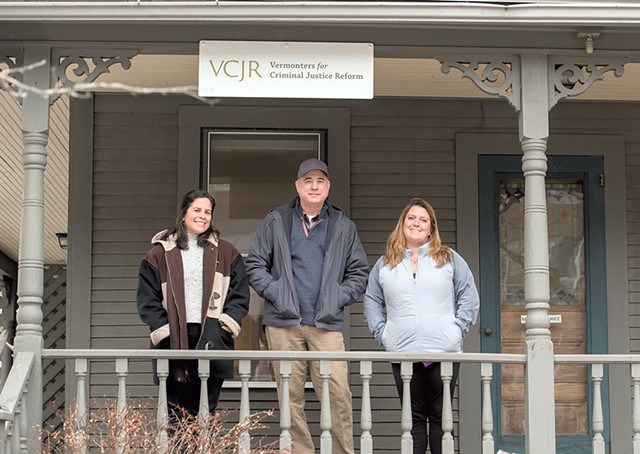
- Daria Bishop
- From left: Monika Rivero, client services coordinator; Tom Dalton, executive director; and Jess Kirby, director of client services for Vermonters for Criminal Justice Reform
They chose to focus the program on fentanyl instead of stimulants because the powerful painkiller is the common denominator in the overdose crisis, Kirby said. The drug has replaced heroin as the main opioid available on the streets, and it's increasingly being mixed with other substances. While overdose deaths involving stimulants surged during the pandemic, almost all the victims also had fentanyl in their systems.
People in the program receive a $30 payment their first week and then earn an escalating participation reward — from $12 initially to $25 by week 12 — that they can double if they test negative for fentanyl. A final $100 payment is meant to motivate people to stick it out until the end. Altogether, participants can earn up to $779 over the six-month period.
The money is deposited onto a reloadable debit card that people have used to pay for gas, groceries and veterinary care. Some are saving it for Christmas. "A lot of people don't have a bank account," Kirby said.
Money isn't the only benefit. Each visit also features a brief counseling session, during which people are asked about their drug use and whether they experienced or witnessed any overdoses that week.
It's a time when counselors can raise awareness about the tainted supply and suggest safer ways to use: Always test for fentanyl; never use alone. And it's a chance for people to step back and begin to process what they're going through.
"It's a chaotic lifestyle, being an addict," said the South Burlington woman with an addiction to methamphetamine. "And because of the things that addiction causes — all the hardships — you don't ever stop and take the time to really think about what you're doing."
Dalton and Kirby sought feedback from Rawson when building their unorthodox program. The expert initially wasn't quite sure what to think. Research into contingency management has always held up abstinence as the only acceptable outcome. "There's not really much in the literature for what to do when you've got a population where that's not going to be realistic," Rawson said.
But he was blown away by the program's enrollment success. "I'm working with a bunch of different pilots around the country," Rawson said. "None of them have recruited as fast as Tom and Jess did."
They managed to do so without advertising. Instead, they signed up some people they were already working with, and word quickly spread.
To qualify, an applicant had to have been recently released from prison or be an active drug user. Once enrolled, there's almost nothing they could do to get kicked out of the program. Those who go three weeks without showing up get put on pause, which is sometimes necessary when people land back in prison or find housing far from Burlington. But they're welcome back any time, Dalton said. Of the 65 people who signed up initially, only six did not return after their first visit.
Data collected during intake showed that almost 60 percent of the participants were unhoused, while the rest largely lived in temporary or unstable housing. Eighty percent had a history of overdosing, including four who had OD'd less than 24 hours earlier. About a third reported serious wounds indicative of using drugs contaminated with the animal tranquilizer xylazine. That drug, which has increasingly been detected during autopsies of people who died of an overdose, causes grisly skin infections that can lead to amputation if left untreated. It can also induce hours-long blackouts — and because it is a sedative, not an opioid, it resists overdose-reversal drugs such as naloxone.
Perhaps most notable: Almost everyone had tried some other form of treatment in the past.
"There are misconceptions that people don't want to stop using," Dalton said. "The reality is that most people really want to stop, but in a given moment, or a given day, they're feeling tired and defeated."
Seven Days spoke to some of the program's participants, who asked to remain anonymous or be identified only by their first name.
Some are using the incentives to help maintain their sobriety. "It's like a little bonus for myself," said a man named T.J., who is in recovery but qualified for the program because he was recently incarcerated.
Roughly half of the participants, meanwhile, have managed to reduce their drug use during the program, data show. That includes Chancy, who signed up the day after an accidental overdose nearly killed him. He credits the rewards for giving him the extra boost he's needed to stay sober. He's now managed to string together two months in recovery, his longest drug-free stretch in years.
For the South Burlington woman, the program has provided a much-needed sense of structure. "Being stuck in addiction, I can get lost sometimes," she said. "It helps having to come in here every week."
The bonus for negative tests has helped motivate her to avoid using when she otherwise might. And the weekly check-ins have made her much more likely to test her drugs for fentanyl, she said, allowing her to make a conscious decision about whether to use that batch — and, if so, how. "Start small and go slow," she said during an interview, echoing a common reminder shared by drug counselors.
"Good stuff!" a proud Kirby interjected.
Just as important, the program helped her confront her fear of failure, which she said has prevented her from trying to get sober in the past. Though she has tested positive for fentanyl a dozen times during the first 19 weeks of the program, she's stuck with it. The participation reward — and Kirby's unwavering support — has played a big part. "The test result isn't the sole focus here," the woman said.
And while she no longer qualifies for the fentanyl-free bonus, that hasn't made testing negative any less meaningful. During a visit last week, she leaned over a pending test, anxiously waiting to see what it said. She wasn't quite sure what to expect; she'd used earlier in the week.
Finally, a faint line formed. Negative.
"A small win," she said, a grin on her face.
A big question about incentive treatment programs is what happens when they end. Some studies have found that patients start using again when the incentives disappear, but a more recent analysis suggested that it still had better long-term effects than other approaches to treating stimulant disorders.
The Burlington program has room for about 25 more people, though spots are filling fast. The nonprofit has a regular presence at the new homeless shelter pods on Elmwood Avenue in Burlington, where staff have been enrolling people and conducting the weekly drug tests and counseling sessions.
Related Residents to Move Into Elmwood Avenue Pods This Week

Dalton and Kirby say they will need more money to expand further. A $44,000 grant from the UVM Medical Center's Community Health Investment Fund currently pays for the incentives and drug-testing supplies. But the nonprofit has relied on its existing funding — which mainly comes from the City of Burlington — to cover the significant staff time needed to run the program.
More money could soon be available. The committee tasked with recommending how Vermont spends the more than $100 million in settlements with opioid companies is making contingency management one of its top initial priorities.
Related Vermont Debates How to Use Opioid-Settlement Windfall to Address Spiraling Drug Problems

Burlington Mayor Miro Weinberger has pushed for that, calling the Burlington program "exactly the kind of innovation we need right now."
Others seem to agree. Last month, Rawson received a call from a nonprofit housing agency in West Virginia interested in setting up a program for its unhoused clients struggling with meth addictions. When the agency expressed concern that the traditional approach might not work well with the people they serve, Rawson replied, "Hold on. I've got something new you can try."
The agency now plans to follow the Burlington nonprofit's lead and pay people to participate in a program launching this summer.

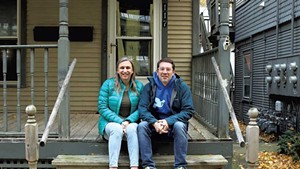


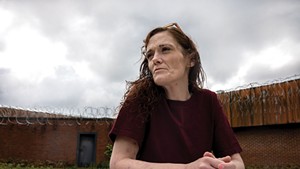
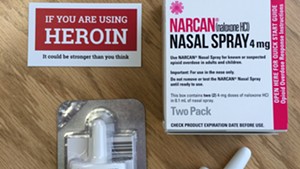





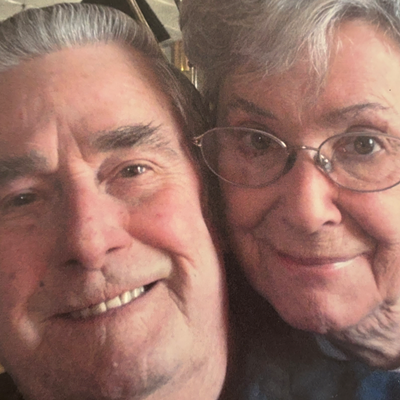
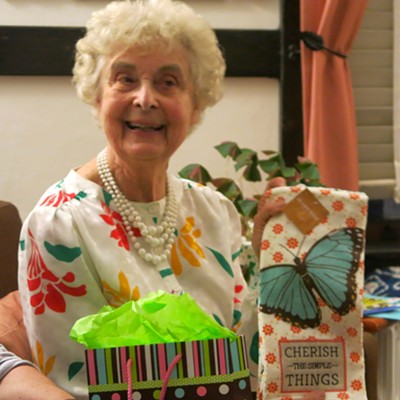
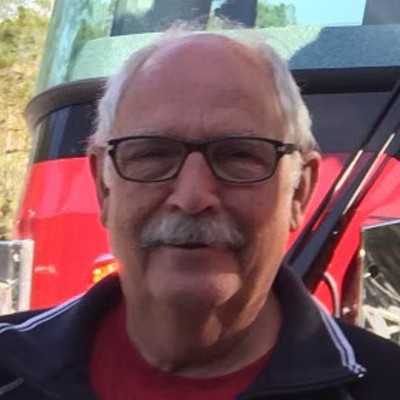

Comments
Comments are closed.
From 2014-2020, Seven Days allowed readers to comment on all stories posted on our website. While we've appreciated the suggestions and insights, right now Seven Days is prioritizing our core mission — producing high-quality, responsible local journalism — over moderating online debates between readers.
To criticize, correct or praise our reporting, please send us a letter to the editor or send us a tip. We’ll check it out and report the results.
Online comments may return when we have better tech tools for managing them. Thanks for reading.